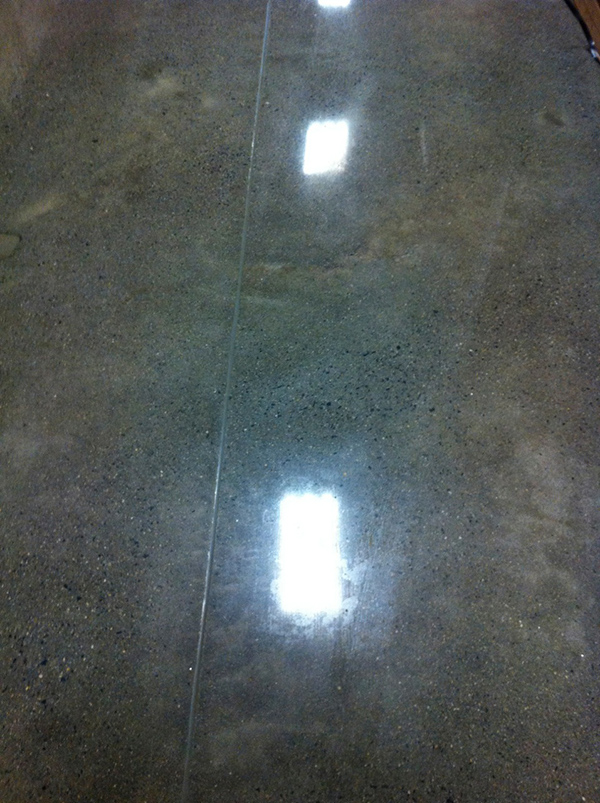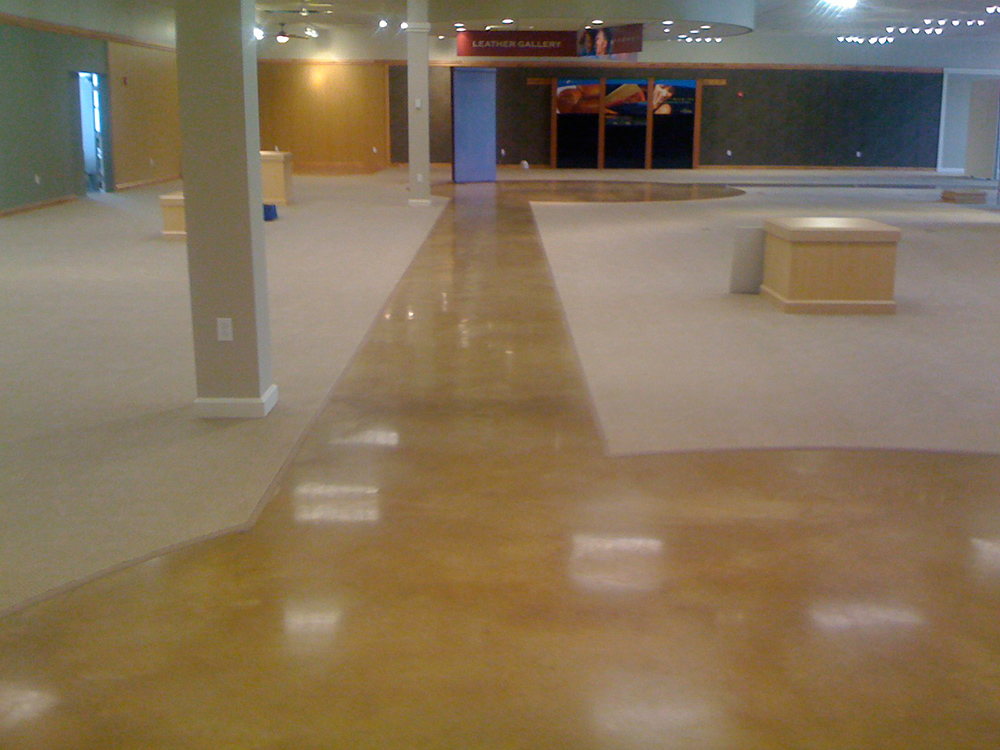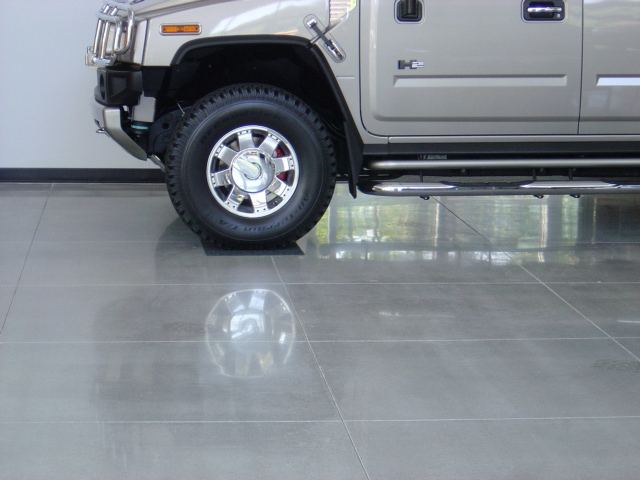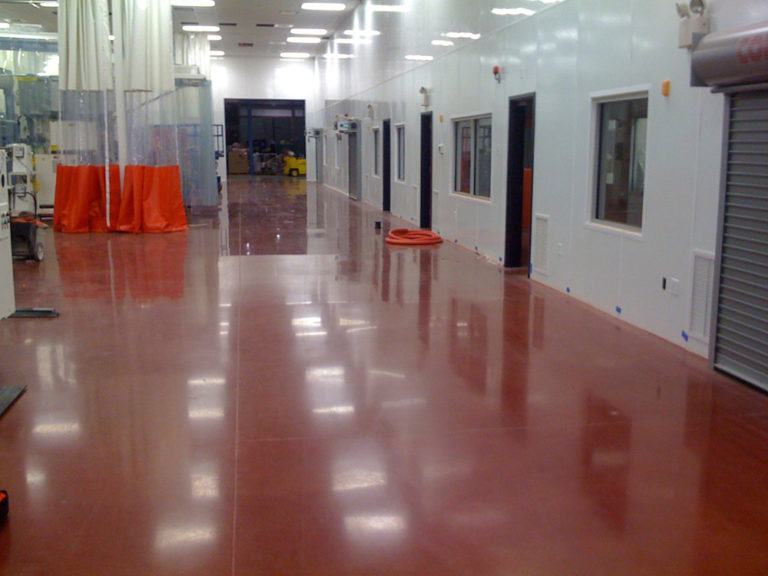If you want to make sure your facility has all of the protection it needs, consider installing polished concrete flooring. You’ll be able to protect your flooring from many different types of damage and avoid the need for frequent maintenance with high-quality polished concrete that maximizes its longevity.

Polished concrete is an excellent option for many different types of applications, whether it’s in an environment with heavy vehicle or foot traffic, risk of chemical spills, or other potential causes of damages.
What are Polished Concrete Floors?
Concrete floor polishing is a process that can significantly improve concrete surfaces of all types, giving you a long-lasting floor that will help reduce maintenance expenses and keep your facility more efficient overall. Top-quality concrete floor polishing will use some of the best coating materials and equipment available to provide a complete finish that lasts for many years.
A polished concrete floor will give you the shine and performance you want from your flooring, providing both physical protection and visual appeal for your facility. Following concrete polishing, you’ll have a floor with a mirror-like glossy finish that enhances your facility in addition to other installations.
How Much Does a Polished Concrete Floor Cost?

Typically, polished concrete flooring will cost between $3 to $12 per square foot, based on the specific location and the extent of the project. Pricing will normally depend on the amount of grinding that are needed to make the surface as smooth as possible. The cost will continue to rise based on additional decorative requirements such as scoring and staining to add more visual appeal.
Pricing will also vary depending on the region of the country and the company that provides the service. You can contact your local contractor to receive an accurate quote for concrete polishing services in your area.
Can All Concrete Floors Undergo Concrete Polishing?
Most concrete floors can undergo polishing, regardless of the age or condition, but there are certain exceptions to keep in mind.
Exceptions could include:
- New floors that have been installed less than 28 days prior to getting polished
- Floors that aren’t sufficiently prepared
- Floors that are especially porous, wavy, or require extensive patching
If your flooring doesn’t fit in with any of these, it’s likely a good candidate for concrete polishing. You can contact a contractor to discuss your flooring needs and determine if concrete polishing is right for you.

In some cases certain contractors may apply penetrating hardeners to new or older concrete floors to help densify and solidify the surface. These products react chemically with the concrete to develop a crystalline surface, while also preventing dust buildup and providing additional protection from staining and water damage.
How is Polished Concrete Installed?
Concrete polishing entails a number of steps to give you the optimum results. You can choose the level of sheen, including high-gloss and satin, to meet your specific maintenance and aesthetic requirements.
The process begins with the use of rough diamond segments that undergo bonding in a metallic matrix. They are coarse enough to eliminate minor blemishes, stains, pits, or light coatings present to prepare the floor for final smoothing. Depending on the concrete’s condition, the initial grinding will involve three to four steps to complete the process.


The next steps will entail fine grinding of the concrete surface through the use of diamond abrasives embedded in a resin or plastic matrix. Crews use finer grits of polishing disks in a process called lapping, until the floor carries the desired sheen. To maximize the gloss of the finish, contractors may use a grit of 1500 or finer. Experienced polishers know when it’s appropriate to use the next-finer grit by looking closely at the flooring and the amount of material to be removed.
Throughout the process, crews will use an internal impregnating sealer that sinks into the concrete and is only visible on a microscopic level. This sealer protects the concrete internally while also densifying and hardening the entire surface. This eliminates any need for a topical coating, which subsequently reduces maintenance needs. Certain contractors will spread a commercial polishing compound over the surface during the final polishing step, which provides additional gloss. These compounds also help remove and dirt remaining on the surface and keep the floors free of any future dirt buildup.
Concrete polishing also uses either dry or wet methods. While each can form the ideal concrete surface, dry is the preferred method because of its added efficiency, convenience, and environmental friendliness. Wet polishing uses water to cool the abrasives and get rid of grinding dust. The added benefit of wet polishing is the increased longevity of the abrasives, as a result of the water reducing friction and providing more lubrication. However, the wet method also generates a large amount of waste that crews need to clean and dispose of in a way that’s environmentally friendly. With dry polishing, the floor polisher connects to a dust-containment system that vacuums up nearly all of the mess.
Many contractors will utilize a mix of both wet and dry polishing processes, using dry for the grinding required at the beginning of the project, and switching to wet as the surface becomes smoother and they change from metal-bonded to diamond abrasives.
Can Polished Concrete Be Laid Over Tiles or Wood?
If a floor is currently made of ceramic tiles or wood panels, you can cover it with polished concrete overlays. Decorative concrete overlays can also cover old and worn-out concrete. The process uses application techniques and tools that will vary depending on the system, extent of the installation, and the desired look.
Similar to installations involving concrete floors, tile and wood floors will require surface preparation prior to applying the polished concrete. This will entail cleaning the substrate, removing existing coatings, and then roughening the surface to ensure a solid bond is formed.
Staining Polished Concrete
Staining is a great way to further enhance the look of polished concrete flooring, in a way that isn’t achieved through other coloring methods. Unlike opaque and solid finishes such as paint, stains actually permeate the concrete to add translucent and luminous tones that will vary depending on the surface to which they are applied, along with application techniques.
Stains for concrete flooring are available in two main categories: water-based acrylics and acid-based chemical stains. A majority of acid stains are a combination of hydrochloric acid, acid-soluble metallic salts, and water. These stains work by penetrating the surface and reacting chemically with the calcium hydroxide in the concrete. The acid in the stain causes light etching on the surface, which allows the salts to penetrate with ease. Following the chemical reaction, the stain remains a permanent part of the concrete, without any fading, peeling, or chipping.
Acid-etch staining is limited to earth tones including browns, tans, soft teals, and terra cottas. However, water-based staining is available if you want to add more colors. Manufacturers often offer black and white water-based staining, along with other colors and even metallic options.
Stains also add more UV and wear resistance to floors, making them ideal for both interior and exterior concrete surfaces.
Contact Professional Polished Flooring Contractors Today
If you would like to install polished concrete flooring in your facility, contact the experienced and knowledgeable experts at ICS Coatings, who will be able to discuss your project specifications and provide a free on-site floor inspection. We have worked with a wide range of commercial and industrial clients, and can determine which services we offer will work best with your flooring.
